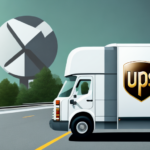Understanding FedEx’s Delivery Process
FedEx is renowned for its extensive logistics network, designed to facilitate the swift and efficient movement of packages worldwide. The delivery process begins when a package is received and assigned a unique tracking number, enabling customers to monitor its journey in real-time. This package is then transported to a regional hub, where it undergoes sorting before being dispatched to its final destination via truck or airplane. Each step is meticulously tracked through advanced scanning technology, ensuring transparency and accountability throughout the delivery process.
FedEx’s commitment to speed and reliability is evident in its continuous investment in technology and infrastructure. The company utilizes sophisticated algorithms to optimize delivery routes, reducing transit times and improving overall efficiency. Additionally, FedEx offers a range of delivery options, including same-day and overnight services, tailored to meet the diverse needs of its customers. Real-time updates provide customers with timely information about their shipments, enhancing the overall delivery experience.
Common Causes of FedEx’s Late Deliveries
High Volume During Peak Seasons
One of the primary reasons for delivery delays at FedEx is the surge in package volume during peak seasons, such as the holiday period. According to the UPS Holiday Delivery Report, shipping volumes can increase by up to 30%, overwhelming the logistics network and leading to significant delays.
Technical Issues and System Failures
Technical malfunctions, including failures in scanning devices and sorting equipment, can disrupt the delivery schedule. Although FedEx invests heavily in maintaining and upgrading its technology, occasional system outages or glitches can impede the timely processing of packages. The FedEx Investor Relations page highlights ongoing efforts to enhance technological resilience.
Adverse Weather Conditions
Extreme weather events, such as heavy snowstorms, hurricanes, and floods, can severely impact delivery operations. These conditions not only hinder the movement of trucks and aircraft but also pose safety risks to delivery personnel. The National Centers for Environmental Information provide comprehensive data on how weather events correlate with shipping delays.
Handling Late Deliveries
Strategies for Dealing with Delays
- Utilize FedEx Delivery Manager: This free service allows customers to customize delivery preferences, receive real-time notifications, and make informed decisions about package handling.
- Request Package Hold: Customers can opt to have their packages held at a FedEx location for convenient pickup, avoiding missed deliveries.
- Upgrade to Expedited Shipping: For urgent shipments, upgrading to FedEx’s expedited services can ensure faster and more reliable delivery times.
Contacting FedEx’s customer service can also provide additional support and information regarding delayed packages. Understanding that some delays are beyond FedEx’s control, such as natural disasters, can foster patience and cooperation during unforeseen disruptions.
Tips for Preventing Late Deliveries
- Order Early: Place orders well in advance of deadlines to account for potential delays, especially during peak seasons.
- Verify Shipping Information: Double-check addresses and contact information to prevent delivery mishaps caused by incorrect or incomplete details.
- Choose Appropriate Shipping Options: Select shipping services that align with the urgency and importance of the package contents.
- Regularly Track Packages: Utilize FedEx’s online tracking tools to monitor shipment progress and anticipate any delays.
- Communicate with Recipients: Inform recipients about expected delivery times to ensure they are available to receive packages promptly.
Implementing these proactive measures can significantly reduce the likelihood of encountering late deliveries and enhance the overall shipping experience.
Comparing FedEx to Other Shipping Services
When evaluating shipping options, it is essential to compare FedEx with other major carriers such as UPS and the United States Postal Service (USPS). Each provider offers a unique set of services, delivery speeds, and pricing structures.
For instance, UPS is often praised for its reliable ground shipping services and comprehensive tracking capabilities. According to the UPS Investor Relations, the company continues to innovate its logistics network to improve efficiency and customer satisfaction.
On the other hand, USPS is recognized for its extensive reach, particularly in rural areas, and competitive pricing for lighter packages. The USPS About Us page details the organization’s commitment to providing accessible and affordable shipping solutions.
Choosing the right shipping service depends on various factors, including the size and weight of the package, delivery timelines, budget constraints, and the specific needs of the sender and recipient. Conducting a thorough comparison can help ensure that packages are delivered in a timely and cost-effective manner.
Conclusion
While FedEx strives to maintain a high standard of timely deliveries, several factors can contribute to delays. Increased package volumes during peak seasons, technical issues, and adverse weather conditions are the primary culprits behind late shipments. Understanding these challenges can help customers set realistic expectations and take proactive steps to mitigate potential delays.
By leveraging tools like FedEx Delivery Manager, opting for expedited shipping when necessary, and ensuring accurate shipping information, customers can enhance their shipping experience and reduce the likelihood of late deliveries. Additionally, comparing FedEx’s services with other carriers can provide valuable insights into the most suitable shipping options for specific needs.
Ultimately, staying informed and prepared is key to navigating the complexities of package delivery and ensuring that shipments arrive on time and in good condition.




















